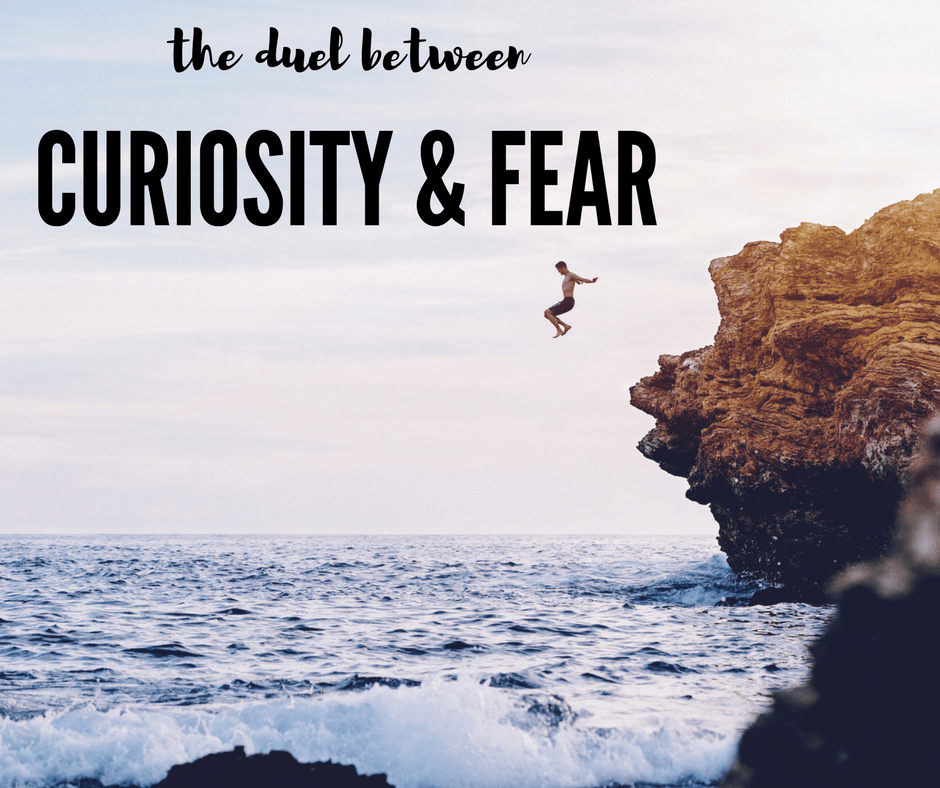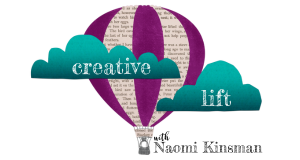
When curiosity faces off with fear, which team do you cheer on?
Your knee-jerk answer may be, “Curiosity, of course.” Curiosity has a positive feel to it, and we know that studies, like this one, show that curiosity helps us learn more effectively.
Do you act on your curiosity, though?
Fear is built into our DNA. It’s there for a reason: to save our lives in dangerous situations. When we wonder what it will feel like to dive into a deep pool from a cliff’s edge, our fear pipes up for our own good. Erring on the side of curiosity in life-threatening situations will eventually catch up with us. Maybe this cliff dive is safe, but will the next one be? How about the one after that?
Many people want to follow their curiosity, but in real-life situations, they follow their fear. In a cliff-dive situation, the decision to err on the safe side may be the better choice. However, the majority of fear-based choices aren’t life or death ones. What’s at risk is embarrassment or the possibility of failure.
When have you backed away from a cliff’s edge and missed an opportunity for growth?
Last week, I had the privilege of being a part of a story circle exercise with a group of fourth and fifth grade students. We each told stories about a time we had tried something new, and after we had listened to all of the stories, we compared notes. Many of the stories had elements of danger to them. Curiosity didn’t always come out as the hero. However, I noticed that in stories where safety wasn’t the issue, where the situation was more of a self-imposed boundary, the decision to take action required two parts.
First, the person had to imagine him or herself as the kind of person who could take this sort of risk.
Standing in the line to ride a roller coaster, waiting a turn to swing on a rope over a lake, listening in the dark backstage for a cue, we watch a mental movie of what might happen. If we allow fear to be the director of the movie, we watch a worst-case-scenario highlight reel. If we allow curiosity to be the director, we watch a possibility-filled show. Often, the two battle it out for the director’s seat, so we watch a story that swings back and forth wildly between the two.
Then, comes the true moment of decision.
We may have dared to stand backstage or to wait in line, but will we step into the stage lights or pull down the bar that locks us into the roller coaster seat? The choice depends on the movie we’ve watched. What do we believe will happen?
If we’re not aware of the power of that mental movie, we leave the director up to our subconscious. We let fear and curiosity duel without any oversight. Too often, fear wins. Fear’s powerful question, “Why risk the consequences?” runs the show.
Why risk the consequences?
Fear’s list of consequences includes embarrassment, wounded pride, and even painful failure. If you line those possibilities up against the consequences of ignoring your curiosity–missed opportunities, getting stuck in the same-old, same-old, and never exploring your capacity–which would you rather risk?
For many, a fear-directed life is a regret-filled life.
Our fear is more powerful than we think, and it takes the director role more often than we’d prefer. We don’t realize how often we’re creating a reality for ourselves because we’re so sure that this is the way life is. That’s fear, directing our lives, keeping us within safe boundaries so that we don’t embarrass ourselves. What might be possible if we risked a little short-term discomfort? Wouldn’t it be interesting to explore our personal and collective capacity? What’s beyond all of those self-imposed limitations?
Sometimes your fear ought to win. It is wise to check the water’s depth before diving off a cliff. However, curiosity deserves room to play, too, if only to offer an alternate perspective. When that mental movie kicks in, consider asking these three questions to give curiosity a fighting chance.
Questions to fuel your curiosity:
- What are the true risks of this opportunity?
- What might this opportunity make possible?
- Do the possibilities outweigh the risks?
When we try something new and fail, we learn firsthand what failure will mean. We might skin our knees or feel ridiculous in front of a crowd. Then comes the inevitable next question. What’s next? We bandage our knees or take a red-faced bow, and then have the opportunity to try again. We discover that while skinned knees hurt, they don’t have to stop us. In fact, we realize that we learned something in that first failed attempt about the way we need to jump. The skinned knees actually led to our ability to not skin our knees next time. Maybe we won’t land the second jump or the third, but as we learn more and more, we also strengthen our resolve. We see that many of the possibilities that fear throws out are ho-hum. True, we might feel a little pain, but we also feel a corresponding thrill of possibility. We might actually be able to do this thing that we thought was impossible. And if this impossible thing can be done … what then?
What then?
I’d love to hear your stories about how curiosity and fear have battled it out in your life. How do you know when to lean toward curiosity, and how do you know when to listen to fear’s wisdom? Do you have strategies for revising your mental movie when fear unhelpfully seizes the floor? Share below, or connect with me on Facebook or Twitter. I always love hearing from you.

